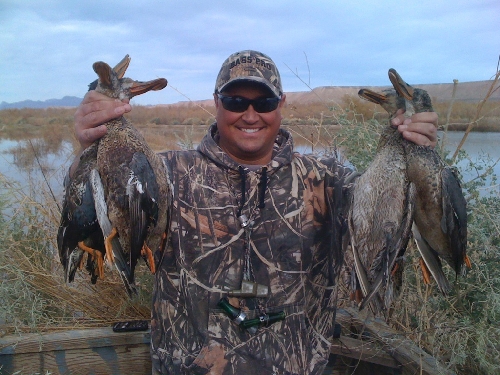Rain stirs waterfowl activity

For better than a week, the weather has been the story for Nevada’s outdoor enthusiasts. High winds and rain have held all but the most ardent anglers at bay, but the unsettled weather could be just what local waterfowl hunters ordered.
As the weather front made its way in from the West Coast last week, Rick Welter — a reader and avid duck hunter — and his partner spent a day at the Overton Wildlife Management Area and bagged eight ducks between them. I spoke briefly with another hunter who made the drive to the Ash Meadows National Wildlife Refuge earlier this week but was disappointed with what he found. He went looking for ducks, but all he found were geese. So if you’re looking for geese.
Perhaps the experiences of these hunters are an indicator of what awaits those who plan on going afield this weekend. Just do yourself a favor and check with your better half before you load your dog in the truck and turn the ignition key. Or not, but don’t blame the dog if you get caught sneaking out for the morning hunt. And remember that birds have wings and go where they want, especially in response to changes in the weather. So nothing is guaranteed.
Looking to the weekend, Brock Perry, a local waterfowl enthusiast and pro staffer for Buck Gardner, a waterfowl call company, told me, “It looks like the birds are starting to stir up a little bit, and we could get a good migration push out of this week of storms.”
The storms that have battered Southern Nevada for the past week or so have been different than the usual flash-in-the-pan storms that hit our neck of the woods. Rather than dropping a few sprinkles and moving on, these storms have provided a steady drizzle-turned-rain over a long period of time.
“This storm front is really gonna push a lot of birds in because it’s a constant storm front,” Perry said. “You got to have five or six days of constant weather like this to really trigger the migration, and this is what does it. It’s the right time of the year; the instinctive timing is there. The storm fronts are pushing a good, hard north wind. All the elements are there.”
Before they go afield, Perry recommends hunters spend time scouting and noting how the wild birds are setting up now because their behavior changes after being hunted and pressured through the first part of the season. This information should dictate how you set out your decoy spread.
“This late in the season, the birds have been seeing mechanical decoys for a while,” he said. “If you are in a field situation, it’s always a good idea to have more decoys out, and when you are in a marsh situation, you want to get your motorized decoys closer to the surface of the water — lower in the water. And matching what’s there is going to be your No. 1, go-to thing. Go with a more exact, detailed formation, matching what you see birds doing.
“The more realistic you can get, the more natural you can get, the closer you can get to what the birds are doing, the better your results are going to be.”
Freelance writer Doug Nielsen is a conservation educator for the Nevada Department of Wildlife. His “In the Outdoors” column, published Thursday in the Las Vegas Review-Journal, is not affiliated with or endorsed by the NDOW. Any opinions he states in his column are his own. He can be reached at intheoutdoorslv@gmail.com.